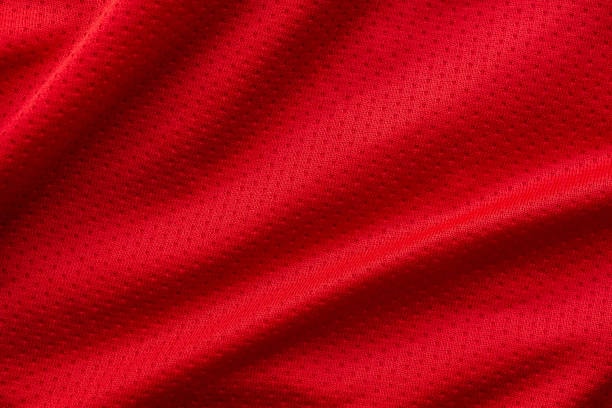
Jersey fabric is everywhere—from your favorite t-shirt to your go-to workout gear. Loved for its softness, stretch, and breathability, this knit fabric has become a staple in both everyday fashion and sportswear. But what is jersey fabric, and why is it so versatile? In this guide, we’ll explore its structure, types, uses, and care tips so you can better understand this wardrobe essential. Whether you’re a fashion shopper, textile student, or DIY crafter, this is your go-to resource.
What Is Jersey Fabric?
Jersey fabric is a soft, elastic knitted fabric that is known for its suppleness and comfort, and there are different types available . Originating on Jersey Island, which is situated between England and France and is part of the Channel Islands, this fabric has traditionally been made of wool and has been used as clothing for fishermen due to its insulating nature and resistance. The jersey fabric has come a long way in terms of transformation. Today, it is most commonly made with cotton, polyester, rayon, or one of the numerous synthetic materials and natural mixtures, depending on application.
Therefore, what is jersey fabric? In other words, it’s an example of a knit and not woven clothing material, a jersey. What it means is that its fibers are knitted to one another and it will stretch in one direction or more. That stretchability is the very reason why a jersey is very comfortable when worn on the skin – it is flexible, breathable, and will naturally adhere to the shape of the body without stretching.
Jersey is loved by everyone not only because it is so comfortable, but also due to the way it behaves. Woven fabrics are stiffer or crisper as compared to jersey which drapes. It is a wonderful fabric for clothing that requires comfort and fashion like the underwear . Think of your beloved weekend go to jersey top, or your favourite dress which is just right and doesn’t restrict one’s motion – bet it’s jersey.
Jersey Knit Fabric Structure
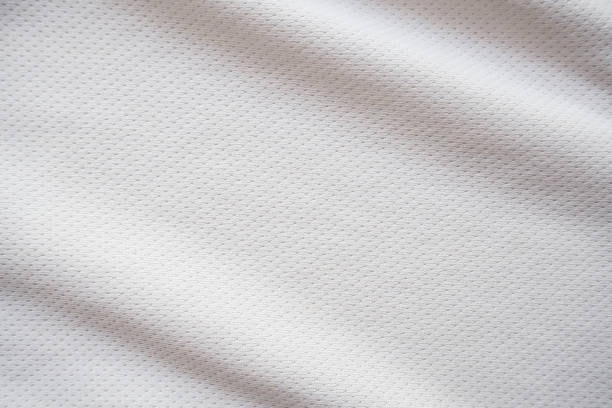
The real strength of jersey knit fabric is in the way that it’s constructed. While woven fabrics are formed by interlacing two groups of yarns over and under one another in a stiff grid, jersey fabric is knitted. That means it’s constructed with a single length of yarn that’s looped row after row. These loops create the softness, stretch, and bounce of the jersey.
To visualize it easily, think of a closely woven fishing net—but finer and smoother. Every loop can be pulled slightly and return to its initial shape. Such elasticity is why jersey fabric feels so comfortable to wear. It conforms to your body’s movement, which makes it a prime pick for apparel where flexibility and fit are important.
This knitting process also accounts for why jersey does not easily fray. When you cut it, you are cutting between loops—not cutting crossed strands. That is why sewing novices and crafting enthusiasts usually prefer to work with jerseys. It is easy to work with, trouble-free, and never unravels like traditional woven fabric.
Types of Jersey Knit Structures

There are two main types of jersey knit fabric, and each has distinct properties:
Single Jersey:
This is the most common one. It is light, soft and also there is a clear demarcation between front and back. The front of these pins is flat and smooth and the back of this side is somewhat textured or looped. As it’s stretched sideways, it’s perfect for everyday clothes that has to align to the movement of the body e.g. t-shirts, tank top and sundress.
Double Jersey (Interlock):
Double jersey otherwise known as interlock jersey is formed using two separate groups of needles that knit two layers. It is therefore the same looking and feeling from both sides – stable, smooth and a little thicker. It also reaches in both horizontal as well as in a vertical direction thus adding to its structure and support. It is ideal for heavier items, like jackets, structured dresses, work clothes, or “staples” in your wardrobe that could use a little more structure, etc.
Here’s a handy breakdown to compare the two:
Fabric Type | Stretch Direction | Surface Feel | Common Use Cases |
Single Jersey | Horizontal only | Smooth front, textured back | Polo shirts, tank tops, light dresses |
Double Jersey | Horizontal + Vertical | Smooth on both sides | Dresses, jackets, uniforms, office wear, bedding |
Another benefit of these knit constructions? They’re breathable. The yarns that form loops create spaces where air can flow through, so jersey fabrics are great for hot weather or layering with heavier garments. And when combined with sport fibers such as spandex or polyester, jersey itself becomes even more stretchy and durable—just right for gym apparel or sport jersey tops.
Types of Jersey Fabric
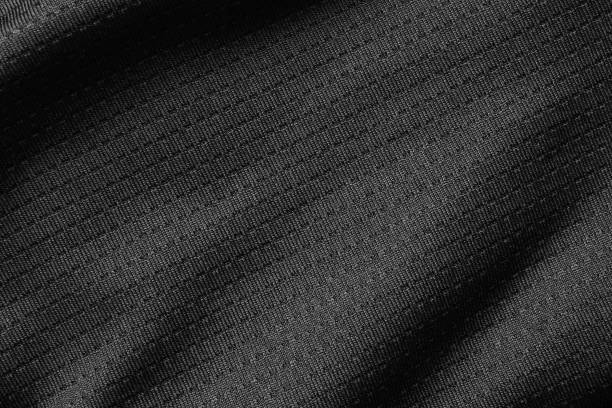
Not all jersey fabrics are created equal. The fiber content plays a big role in how the fabric feels, behaves, and performs.
1. Cotton Jersey
Cotton Jersey is constructed from 100% cotton or a cotton-heavy blend. It’s breathable, and absorbent. Cotton jersey is ideal for daily wear clothes, particularly for individuals with sensitive skin.
For many people, cotton jersey is a go-to option. You can usually find Cotton Jersey in:
- T-shirts
- Baby wear
- Pyjamas
- Lightweight dresses
2. Polyester Jersey
Polyester is a man-made fiber that is famous for being durable and having natural moisture resistance. When made into jersey, it produces a fabric that is best suited for sports wear and functional wear.
Look for polyester jersey in:
- Workout shirts
- Sport jerseys
- Gym attire
- bedding
3. Rayon or Modal Jersey
Rayon fabric and modal fabric are partially synthetic fibers originated from natural products. They provide jersey with a silky texture and an upscale drape. These varieties are favoured in fashion clothes with a need for flow and movement.
Favoured uses include:
- Summer dresses
- Blouses
- Sweepy skirts
4. Blended Jerseys
Many jersey fabrics combine fibers to balance comfort and performance. For example, cotton-poly blends offer softness and wrinkle resistance, while rayon-spandex blends add stretch and fluidity.
Blended jerseys are extremely versatile and can be tailored for specific garment or bedding needs.
Common Uses of Jersey Fabric

One of the reasons the jersey is so widely loved is its versatility. It’s used across many clothing categories, and for good reason.
1. T-Shirts and Tank Tops
This is likely the most classic application. Cotton Jersey is lightweight, and breathable — ideal for daily tops.
2. Dresses and Skirts
Rayon and modal jerseys excel in these uses. They produce garments that drape wonderfully and flow with the wearer. Jersey dresses are perfect for casual and semi-formal occasions.
3. Lounge-wear and Pyjamas
Jersey’s softness makes it ideal for lounging attire. From a comfortable pyjama set to a relaxed hoodie, this fabric makes you feel at ease at home.
4. Baby Clothes and Accessories
Since the jersey is soft against the skin, it’s often used for onesies, caps, and blankets. It’s also simple to clean, which is a big advantage for baby equipment.
Sport Jersey Fabric: Performance Meets Comfort
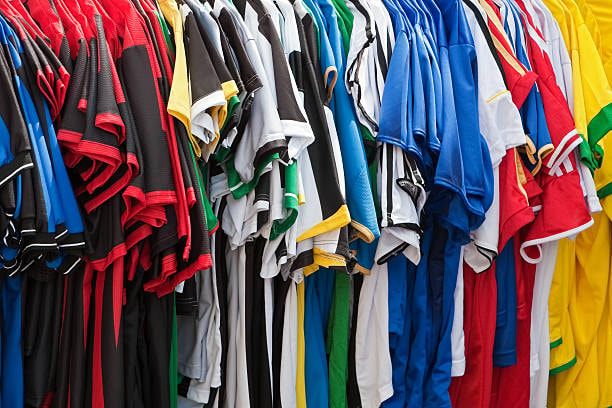
In regards to athletic apparel, functionality is equally essential to comfort, which is often found in double knit fabric . Sport jersey material is designed to accomplish both.
The majority of sport jerseys utilise polyester or polyester blends. These fabrics are:
Moisture-Wicking: They draw sweat off your skin.
Quick-Drying: Dries you in the midst of high-level activity.
Durable: Designed to withstand rubs and repeat washing.
Professional teams, school leagues, and fitness enthusiasts all utilise sport jerseys. Their streamlined appearance and lightweight construction make them a standard in athletic equipment.
Several sport jerseys also feature mesh panels or ventilation areas to enhance airflow. This is especially prevalent on soccer jerseys and basketball uniforms.
Pros and Cons of Jersey Fabric
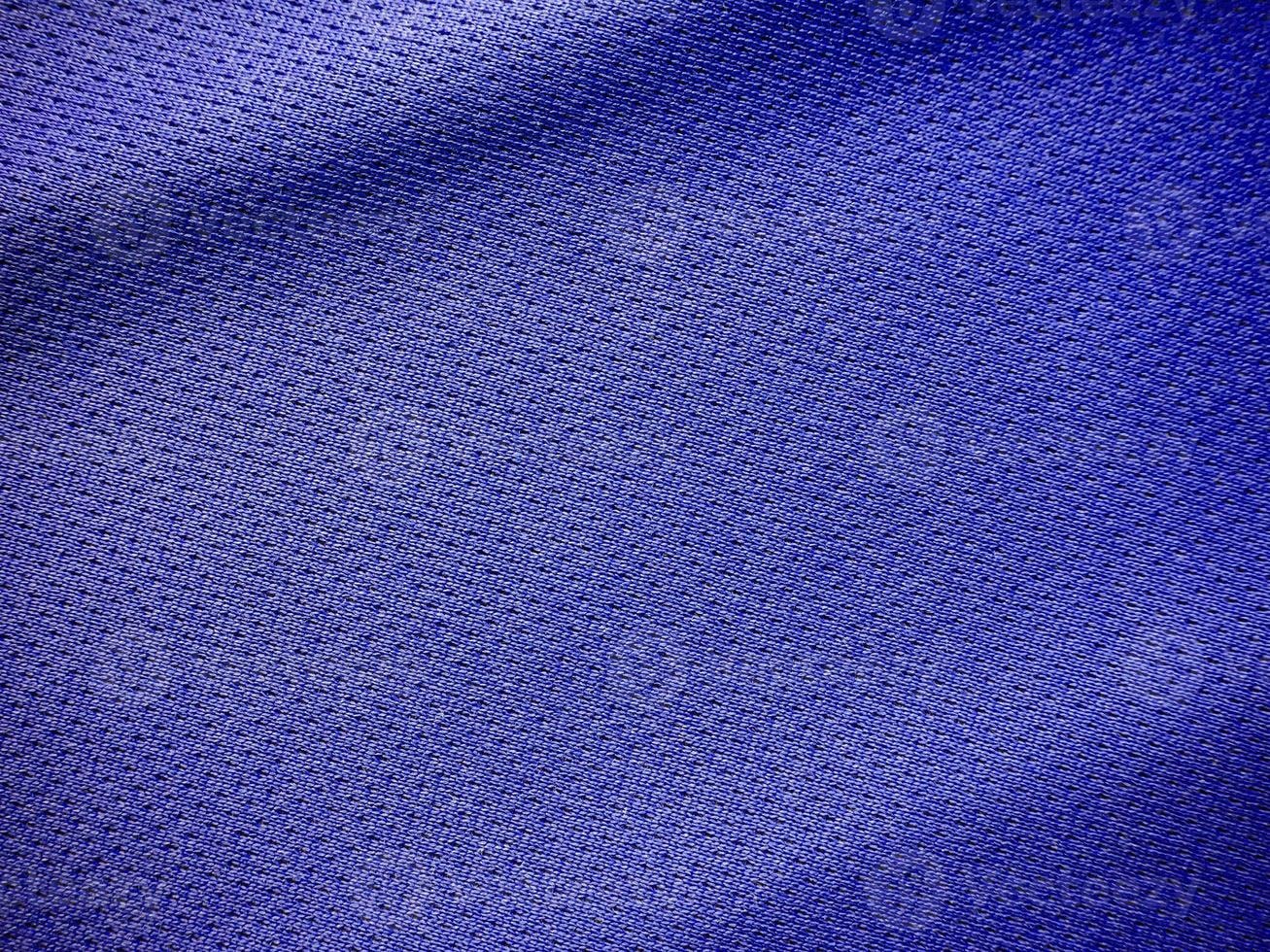
Every fabric has its strengths and weaknesses. Here’s what you should know about jersey.
Pros:
- Comfortable: The Jersey fabric is simply fantastic against the skin as it ensures a level of comfort that can barely be beat. It is perfect for everyday wear as it guarantees you to be comfortable all day.
- Stretchy: Stretch – ability is one of the characteristics that demonstrate a jersey. The material glides with you, providing a nice equilibrium of flex and structure for your leisure or workout.
- Breathable: But due to its knit structure, jersey fabric allows air to circulate so as to keep you cool. This makes it a very good option when wearing it in warmer weather or active wear.
- Good Drape: Jersey’s flowy character endows it with charming fall, and, hence, it has become an ideal option for clothing items that are made to fall neatly on your body (dresses and skirts).
- Easy to Sew: Jersey is a fabric that is easy to utilize for a beginner; this is why it is a favorite among the DIY sewers and crafters. It does not take a lot of specialised skills to deal with, and one can stitch it with simple techniques.
Cons:
- Edges Can Curl: One of the problems that are commonly associated with jersey, and in particular single jersey, is the fact that its edges are rather inclined to curl. This could sometimes be a bit tricky if one works with it, especially when hemming or finishing.
- Can Be Thin: Some lower-quality jerseys can feel flimsy or sheer, especially in lighter weights. While a jersey can be soft and comfortable, thin fabrics may not offer the durability you need for long-lasting garments.
- May Pill Over Time: Synthetic jersey mixtures, especially those that have high percentages of polyester, have higher tendencies to pill with repeated use. Although this doesn’t compromise the comfort of the fabric as a whole, this may have an impact on its appearance as time passes by.
Despite a few drawbacks, the benefits often outweigh the cons, especially for everyday clothing. Jersey’s comfort, versatility, and ease of care make it a valuable addition to any wardrobe.
How to Care for Jersey

Jersey fabric is fairly low-maintenance, but there are a few tips to help your clothes last longer.
Washing:
- Use cold water and a gentle cycle to reduce wear.
- Turn garments inside out to minimise friction.
Drying:
- Air dry or use low heat settings.
- Avoid high heat, which can shrink or damage fibers.
Ironing:
- Use a low setting.
- Iron while fabric is slightly damp for best results.
Additional Tips:
- Skip the bleach and fabric softeners.
- Store folded instead of hanging to help it less stretch.
By following these care tips, your jersey shirt or lounge pants will stay comfy and fresh for a long time.
Jersey Fabric vs Other Knits and Wovens
Not sure how a jersey compares to other fabrics? Here’s a side-by-side look:
Fabric Type | Structure | Stretch | Breathability | Use Case |
Jersey | Knit | Medium | High | T-shirts, dresses, activewear |
Interlock | Double Knit | High | Moderate | Jackets, stable tops |
Rib Knit | Knit | Very High | High | Collars, cuffs, fitted tops |
Cotton Poplin | Woven | None | Medium | Shirts, blouses, casual pants |
Jersey stands out for its combination of stretch, comfort, and ease of use. It’s more relaxed than poplin, less structured than interlock, and more versatile than rib knit.
Final Thoughts: Why Jersey Is a Go-To Fabric for Everyday Wear

Jersey fabric perfectly combines comfort, style, and performance to create fabric for use in all manner of clothes. Regardless of whether you need to dress up for a casual day out, warm up for an exercise or relax in your home, the jersey fabric or the cotton jersey fabric provides the ideal blend of both flexibility and ease.
The jersey’s softness is enjoyed by the fashion shoppers; it is comfortable, making it a great thing for casual wear and standard attires. Sportsmen believe in its moisture-wicking and breathability, especially in sports jerseys where high performance materials are needed. To do-it-yourself crafter and fashion students, the stretch and ease of use of jersey make it a desirable choice for many sewing projects.
From traditional cotton jersey t-shirts to polyester sports jerseys and jersey dresses made of rayon fabric where the fabric changes its nature in response to a multitude of needs. Its combination of stretch, comfort, and durability and especially of synthetic fabric options, has made jersey fabric an indelible mark of the classic high-street fashion and sportswear. It is no wonder that it is still a favourite both to designers and consumers alike.
Ready to explore more? Visit Yanmao Textile for premium jersey fabric options, including cotton, polyester, rayon, and blends. Our team is here to provide personalised fabric solutions tailored to your unique requirements. Let us help you create exceptional products with the versatility of jersey fabric.
Also, if you love cashmere, here’s Everything You Need to Know About This Luxurious Fabric.
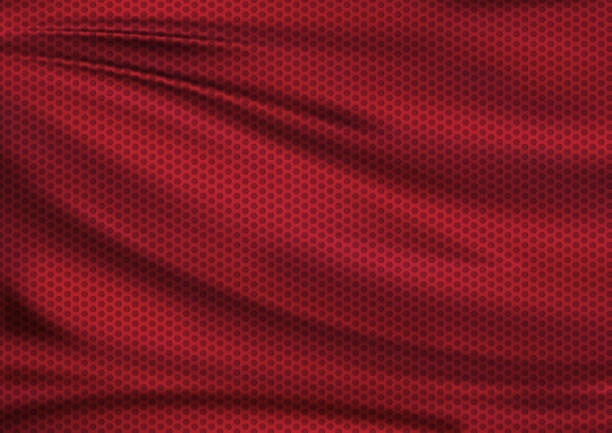
Yanmao Textile was established in 2018 and currently, it has become one of the suppliers of premium quality fabrics to international fashion companies. We specialise in woven and knitted textiles providing versatile solutions both for fashion, sportswear and for home textiles.
We believe in innovation, quality, sustainability. Our certified productions guarantee that every yard of fabric is of the highest standard. If you want to get new styles or scale production, our team will come to help you realise your objectives with no base of service and professional advice.
Partner with us to bring your fabric vision to life.





